ChiLiving > Knowledge Center > Injury Prevention & Recovery
Running doesn’t hurt your body, it’s the way you run that causes problems. ChiRunning significantly lowers injury rates for all runners, while improving performance at the same time.
The idea that running causes injury is a myth that needs to be put to sleep – forever.
Runner’s knee, shin splints, IT band syndrome, plantar fasciitis – all the dreaded sideliners that put so many runners off their stride are, in most cases, preventable. In everyday living, accidents and injuries can happen. But just as a good, cautious driver has fewer accidents, someone who uses a good running technique, will have fewer injuries.
When you listen to your body, interpret discomfort accurately, effectively eliminate resistance, and use gradual progress as a rule of thumb, you will have fewer injuries or potentially none at all. A ChiRunning practice teaches you how to do that.
Running injuries don’t have to happen. In fact, they’re most often a result of either overuse or impact.
Overuse injuries are caused by using your muscles incorrectly or beyond their capacity.
Impact injuries come from over-striding or heel striking, which in essence produce a repetitive braking motion with every stride.
No one likes to get injured and take a break from their running practice. It can take weeks or months to recover from a serious injury.
ChiRunning can help you discover and correct the movement patterns that caused the injury. When you eliminate the cause of an injury, you’ll never have the problem again, and you can run without fear of a recurrence. Having this tool in your toolbox is a major confidence builder!
Developing a keen sense of body awareness is critical for staying injury free. When you can feel a slight discomfort, you can adjust your form and/or training plan to solve it before it becomes a painful injury.
ChiRunning gives you the ability to manage discomfort on the fly. Imagine having a rolodex of solutions you bring on each run that keep your body feeling safe, sound, and energized.
A big complaint we hear from folks about running is that it’s hard on their knees. We agree that knee pain is real, painful, and interrupts training, but running itself isn't necessarily the problem.
Typically, when someone runs with knee pain, they are quick to share, “It from running.”
Running takes a lot of blame for knee problems when it’s actually the way you run that causes problems.
When you minimize impact and stress to your knees - by adjusting your form - your knees will thank you and respond to running differently and without discomfort. It’s as simple as that.
Taking good care of your knees should be a high priority if you want to enjoy running year after year. ChiRunning teaches you how to reduce impact and injury and acts as a “life insurance policy” for your knees.
ChiRunning: Proudly keeping knees happy for over twenty years!
For years, running has been categorized as a sport that, if not downright bad for your knees, certainly isn’t good for them.
Here’s the good news! A new study in the European Journal of Applied Physiology says that running may in fact benefit the knee joint, changing the biochemical environment inside the knee in ways that could help keep it working smoothly.
Twenty five percent of all running injuries are knee injuries, making it the highest single cause of injury to runners. Almost all knee injuries are impact injuries. So, if you can reduce impact when running, you’ll reduce your chances of knee injuries.
Generally speaking, beginning runners are more likely to have knee injuries than long-time runners, who are more likely to Body Sense knee pain and do something about it before it turns to an injury.
The 3 Main Knee Injuries and Their Causes:
How you land becomes a big deal if you want to avoid knee pain. With every stride you take, you land with an impact force that can range from 3-6 times your body weight. With an average of 1500-2000 strides per mile, that can add up to thousands of pounds of force acting on your knees. If you can even reduce your amount of impact by ONE body weight, it can mean thousands of pounds of shock eliminated each mile!
In a UNC Chapel Hill Running Study, ChiRunning was shown to significantly reduce impact to the knees. Imagine how it would feel to float across the earth — instead of “running yourself into the ground.”
This debilitating and persistent injury can happen to runners and walkers alike. And, it’s easier to get rid of than you think. With proper running technique and specific exercises you could be saying goodbye to PF within a month. With over 20 years of experience, advice from medical professionals and hours of research, we’ve done our homework to help you quickly and permanently recover from PF, and avoid it altogether.
The Plantar Fascia is a ligament that connects the heel bone to the five metatarsal heads of the foot. It acts much like a fan-shaped bowstring, giving your foot an arch shape. The arches in your feet add cushioning and spring to your feet so they can support the weight of your body without your foot bones being pounded to a pulp when you walk and run.
Plantar fasciitis is an inflammation of the plantar fascia, where it connects to either the heel bone or to the base of the toes.
It can be caused by any motion of your legs that creates a pull on the plantar fascia. That means walking or running up or down hills, climbing stairs, walking or running on your toes (yes, that includes wearing high heels), or pointing your toes up as your heel comes down with each stride (dorsiflexing).
Other causes of plantar fasciitis:
Heel striking is the main cause of PF in runners. If you’re reaching forward with your legs when you take a stride you’re very likely to land on your heel first. This creates a force on your heels of up to 6 times your body weight with each footstep. That is a very small area to be absorbing that much weight. The surface area of your heel is about 2 square inches. If you weigh 125 lbs. and you’re running with a heel strike, that means the force to your heel is…let’s be conservative and say 4 times your body weight. That means that there is 250 lbs./sq. in. of force on your heel with each stride. With that kind of pressure, it’s no wonder you end up bruising the spot where the plantar tendon attaches to the heel.
When the plantar fascia is stretched too much, it forms micro-tears and begins to pull away from the bone. This causes the fascia to become inflamed, and you’ve got fasciitis (inflammation of the fascia).
Stage 1: When plantar fasciitis first appears it can feel like you’ve got a lump in the heel of your sock. No big deal. No pain…just an uncomfortable “thick” feeling right under your heel. I find myself taking out the insole to my shoe to see if there’s maybe a rock trapped underneath. If, after replacing the insole and straightening my sock out, I still feel a lump under my heel, I take it very seriously.
Stage 2: If this goes untreated, you might begin to feel a little tender when you first get up from a chair or get out of bed in the morning. In the early stages the discomfort it will go away once your up and about on your feet. But, as the injury advances into later stages, the tenderness will linger and begin to turn into what feels like little needles sticking you in the bottom of your heel with each step.
Stage 3: As the fascia tries to heal itself, your foot can develop scar tissue, which is the body’s way of holding it all together. This restricts the mobility of your foot, reduces blood circulation, and causes deadening where the fascia joins the heel bone. This is called plantar fasciosis, and is a secondary stage, where inflammation no longer exists, but pain is still felt.
NOTE: The treatment for this is NOT to take pain killers or treat it as if it were inflamed. You must do what you can to improve circulation to the injury so that normal healthy tissue can regrow. Once healthy tissue returns, you can then proceed to stretch and strengthen the plantar fascia without fear of a recurrence of your original injury.
Many runners, at some point in their running career, have a case of sore shins, varying in degree from mild discomfort to debilitating pain. According to a study by the NIH, up to 20% of all runners experience “shin splints,” medically known as medial tibial stress syndrome (MTSS).
Although it is one of the most common running injuries, it is relatively easy to fix and prevent. So, if you’re concerned about the health of your shins, read on and find out how you can avoid shin splints for the rest of your life.
In the mildest cases, shin splints are inflammation of the fascia (connective tissue) that surrounds, and connects, the muscles of the lower leg to the bone (the tibia). In the worst cases, the fascia is under such stress that it actually separates from the tibia, which is very painful and can often involve a rather slow healing process. The medical name for this condition is Medial Tibial Stress Syndrome (MTSS), which is why we use the term shin splints.
The two main causes of shin splints are: too much impact to the lower legs and overuse of the lower legs while running. Impact is created by over-striding and heel striking, while overuse happens when you “toe off” to propel yourself forward. Neither of which you’ll do when practicing ChiRunning.
Other causes are:
Let’s review the two main issues in more detail.
If you overstride, the shock of your heels hitting the ground creates an abrupt pull on the muscles in your shins which can irritate the fascia, creating inflammation, or in worst cases, tears in the connective tissue. When the fascia becomes irritated or inflamed you’ll feel discomfort in your shins that could worsen over time if no correction is made.
Heel strike happens when you reach forward with your legs as you stride…commonly called over-striding. ChiRunning offers a way to eliminate heel strike by training you to land on your midfoot, closer in to your body and underneath your center of mass, rather than reaching with your legs.
Causes of too much impact to the lower legs:
This is caused by landing on, or pushing off with, the toes—which in turn causes the calf and shin muscles to overwork. Pushing off with your toes creates too big of a job for this small group of muscles to handle. They get overworked and eventually begin to “complain” in the form of soreness, inflammation, and in some cases they become separated from the bone (the most painful version).
Here’s how you might be overusing your lower legs:
Beginning runners who are starting up a running program will often run too far or too fast before their legs are ready to sustain the distance or the speed they’re running. Add to this the fact that many runners push off with their toes, which increases the stress to their legs, especially the shins. In addition, many runners also start their runs too fast and don’t allow their muscles to warm up enough before increasing their speed. Shin splints are also most likely to occur during track workouts involving speed intervals, and hill runs…both of which increase the amount of push-off with the toes.
Compared to the larger muscles in your upper legs, your lower leg muscles are relatively small and can be easily over-worked. So, the best solution to the overuse of the lower leg muscles is to use them as little as possible.
Getting you to relax your lower legs while you run what ChiRunning is all about. By running with a gentle forward fall, there is little need to be pushing yourself with your legs. ChiRunning been showing runners how to do this for over twenty years, with incredible results.
IT Band Syndrome (ITBS) is an overuse injury that can affect runners of all levels, from beginners to seasoned runners. It can be painful enough to bring anyone’s training program to a snail’s pace or a screeching halt. However, with proper running technique, you can easily overcome IT Band Syndrome, or even prevent it altogether!
Your Iliotibial Band is a long connective tissue that originates at your hip, runs down the outside of your thigh, slips over your knee, and attaches to the upper part of your tibia (lower leg). It’s the ligament that allows you to straighten and stabilize your knees as they bend.
It is inflammation of the IT Band, most commonly felt at the knee, but can also be felt as a tightness the full length of the tissue. In some cases, it can be felt at the hip too… It is an overuse injury, which is important to note, because the solution is straightforward - use it less and/or use it differently than you are currently using it.
This is a larger question to answer because ITBS can have multiple causes, either working alone or in conjunction with each other. Here are some of the main causes:
As you can see, the predominant causes of ITBS are muscle weakness and poor running form. ChiRunning can help you to not only run correctly, with the least amount of stress on their body, but to run in a way that strengthens and loosens all the right muscles while you run.
Achilles Tendonitis is an injury you get from trying too hard - pushing too hard on the flats, on hills, during intervals or speed workouts. When you try too hard, your body can’t keep up with your expectation at that time (how fast you should run and how hard you should push), and will breakdown if you do not listen to your body and adjust immediately. ChiRunning teaches speed with ease… where your legs no longer have the sole responsibility of getting you that speed you’re looking for.
That being said, you can also push too hard even if you’re not trying to go faster. Many beginner and recreational runners push too hard with their legs because of poor running technique.
The Achilles Tendon attaches your calf muscles to the back of your heel bone.
Plantar flexion is when you contract your calves and point your toes. While running, every time you “toe-off,” your calves fire, concentric loading of the calves, which pulls on your achilles tendon. Eccentric unloading of the calves happens when you land and your achilles tendon is recruited to help cushion the impact.
When going up a hill, or accelerating, conventional runners use the balls of their feet to push themselves forward, or upward, as the case may be. This puts a lot of strain on your achilles tendons because, while your calves are contracting to point your toes and push you up the hill, your achilles tendons are stretching because the weight of your body is pushing down on your heels and working against the contraction of your calves. There has to be some give somewhere and it’s usually at the place where your achilles tendon inserts into your heel bone.
When this attachment gets strained it can become inflamed (achilles tendonitis), which can be very painful and can bring your training program to a grinding halt. When runners experience achilles tendonitis, doctors usually prescribe anti-inflammatories to ease the pain. A more longer lasting solution to easing the pain is to learn the root cause of the injury in the first place, so you can avoid any recurrence.
If achilles tendonitis is not treated it can turn into achilles tendinosis (which is non-inflammatory and should not be treated with anti-inflammatories). This progressed injury is treated with physical therapy, and stretching and eccentric loading of the calves and can interrupt your training plan while you try to ease the pain.
If you continue to “run through the injury” without correcting the cause, you could end up with a heel spur (ouch!) or a rupture of the achilles tendon (long-term injury).
Think about it. When you run uphill you are using relatively small muscles (your calves and feet) to push your entire body weight upward, when you could be using your core muscles, which are much stronger. It’s easy to see how your achilles tendons can get overworked pretty quickly because they’re not supposed to handle that huge amount of workload. They’re designed to point your toes!
If you wear high heels this problem can get exacerbated, because of the shortening of the achilles tendon that comes with elevated heels. When that shortened tendon is required to stretch on a hill, or during a quick acceleration, it lacks the resilience of a normal-length achilles, and it can get overstretched or pulled away from the heel bone.
ChiRunning takes a proactive approach to reducing lower leg injuries like achilles tendonitis (or tendinosis), by showing you how to run without relying on your lower legs for propulsion. When you learn to relax your lower legs and run without pushing off with your toes, most of the common lower leg injuries that plague other runners will no longer be an issue for you… ever. And, your achilles tendons will always be happy campers.
This means just that. LISTEN. Get to know every nuance of your body. Pay attention to every detail. And then, do what you can to correct the cause of the problem. Learn the different voices of pain, just as a mother can tell whether her child’s cry is of hunger, anger or sleepiness.
We call it Body Sensing. Most people don’t take the time to listen to what their body is telling them. If your knee hurts, you’re probably landing too hard. If your calves ache, you’re probably pushing too hard. When you truly hear what your body is telling you, and then make the necessary adjustments, you can correct the situation before it turns to an injury. We’ll show you how to be a pro at it.
When you’re in pain, figure out what you’re doing wrong and make a correction. If you’re in pain, you can almost always do something about it. If your knee hurts, it could be several things, but find out and make a change. You might be over striding or landing in front of you center of gravity or pronating. All these things can be adjusted and you can alleviate the pain and prevent long term injury.
Good posture is everything in T’ai Chi and in all movement. When your posture is aligned, all movement has a better chance of being correct. Good alignment is the foundation for efficient movement and promotes a healthy spine. Your chi moves up and down your spine. If you’re crooked, the flow of energy is inhibited and your movement will not be fluid. If you’re long, strong and tall (even if you’re short) your movement can flow more easily through that straight pipe. Your posture affects your breathing, your movement and even your digestion. Perfecting your posture is fundamental to a being pain-free and injury-free runner.
In ChiRunning, your upper body moves forward as your legs swing rearward. This is the type of balanced movement that makes an efficient runner. If you lead with your legs, you’re putting on the brakes with every foot strike and creating impact to your muscles and joints. Plantar fasciitis, shin splints, knee pain, hip pain, and lower back pain can originate from the pounding that occurs when your foot strikes in front of you. We’ll show you how to change all of that, so you’ll never have to worry about impact injuries again.
Whenever you’re learning something new, upgrading your running schedule or adding speed or distance, take your time and don’t rush the process. If you try to do to much too soon, you’re writing a recipe for injury!! If your longest run is five miles, don’t try to run a marathon in three months. When you’re learning ChiRunning, don’t expect to perfect it in the first month. Pushing and forcing your way to a goal is a great way to get hurt. Set reasonable goals and take your time. Savor your experience and enjoy the process. You’ll run for the rest of your life if you take your time now.
If you land heel first, you’re in for a world of hurt because of all the impact it creates to your legs. You could end up with bad knees, plantar fasciitis or sore quads. A mid-foot strike allows you to land softly without all the jarring that a heel strike creates. If you’re not a midfoot striker, we’ll be happy to show you how stop heel striking and avoid any future lower leg injuries.
Take your time getting started. Let your run unfold slowly before you ask it to pick up speed. This gives you a chance to listen to where you are tight. Work on the details of your running form during the first miles. Then, let speed work it’s way into your runs as you warm-up, loosen, and relax your body. You won’t get injured this way, and you’ll be amazed at how much easier your late-run experience can be.
This tip goes right along with Tip #7. Make sure you’re stride is shorter during your warm-up period and you’ll never run the risk of over-stretching your muscles or pounding your legs with a lopey stride. It also forces you to slow down, especially if you have a tendency to be too fast at the beginning.
After many months and miles the midsole gets compacted, the shoe loses flexibility and an injury is often the result. Get a new pair about every 500 miles. Shoes are very important, so invest your time and money wisely in finding out what is best for you.
If you stick to a program of starting your runs slowly, you won’t have to stretch before running because you’ll be bringing your muscles into motion gradually. A good stretch should be slow and be held for 20-30 seconds. You can move and adjust within that stretch by doing slight adjustments, but stretching is the perfect time to practice your Body Sensing skills. Don’t push your stretch too far, but take your time and relax into a deep place of flexibility. Listen to what your muscles are telling you after your run and stretch them accordingly
These are just a few of things you can do to help put to sleep the myth that running causes injury. For everything you need to know about how to run injury-free for the rest of your life, get your copy of the ChiRunning book and DVD.
You might be surprised to that learn that the way you walk can cause injuries. ChiWalking makes fitness walking easier on the body and helps improve and eliminate aches, pains, and the discomfort of walking incorrectly.
How you walk can be the difference between being in pain and feeling fabulous. Walking properly will help maintain your health and alleviate lower back pain. We’ll teach you to engage your core and create strong, balanced posture, all while deeply relaxing and relieving back pain. Minimize pain. Integrate easier and more fluid movement into your walking.
Foot pain is a common complaint of walkers. The cause can be a number of things, including poor walking technique, bad posture, and the wrong shoes. Some can be corrected by improving your walking technique. Some pains can be as simple to correct as getting better shoes. ChiWalking reduces foot problems by teaching you how not to rely as heavily on your feet for propulsion.
Awareness of proper movement will help treat and prevent the sharp sensation at your hip that extends down your thigh. Loosen your hips and pelvis and learn how to take impact off your hip joints. Develop the ability to physically sense what’s happening in your body and to respond with your body’s intelligence.
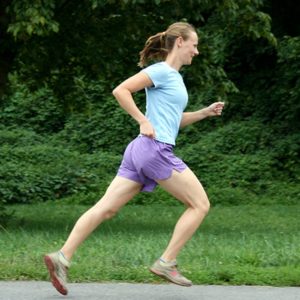


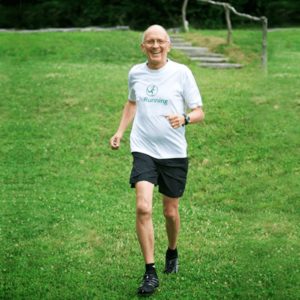

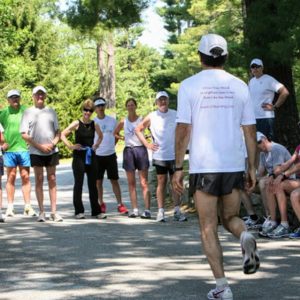
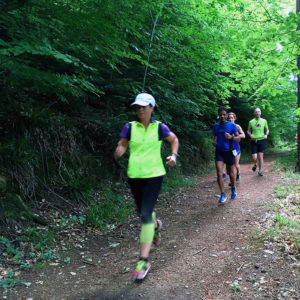
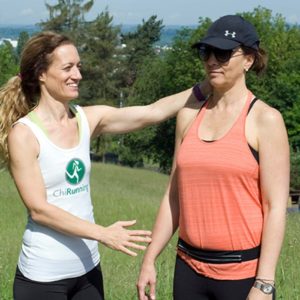
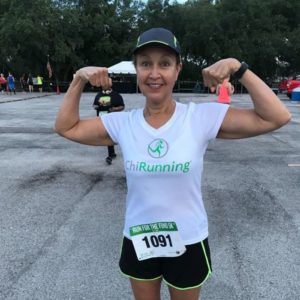
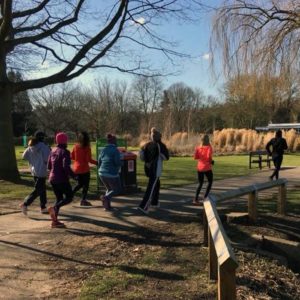
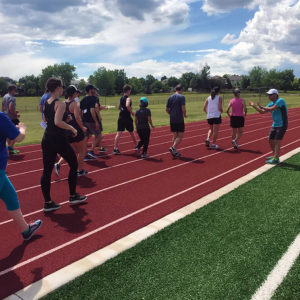

Share Your ChiWalking, ChiRunning, and living your best ChiLife photos with us!
© 2025 chiliving inc All rights reserved | privacy policy
website design & development by inkriot marketing & mad cow web design